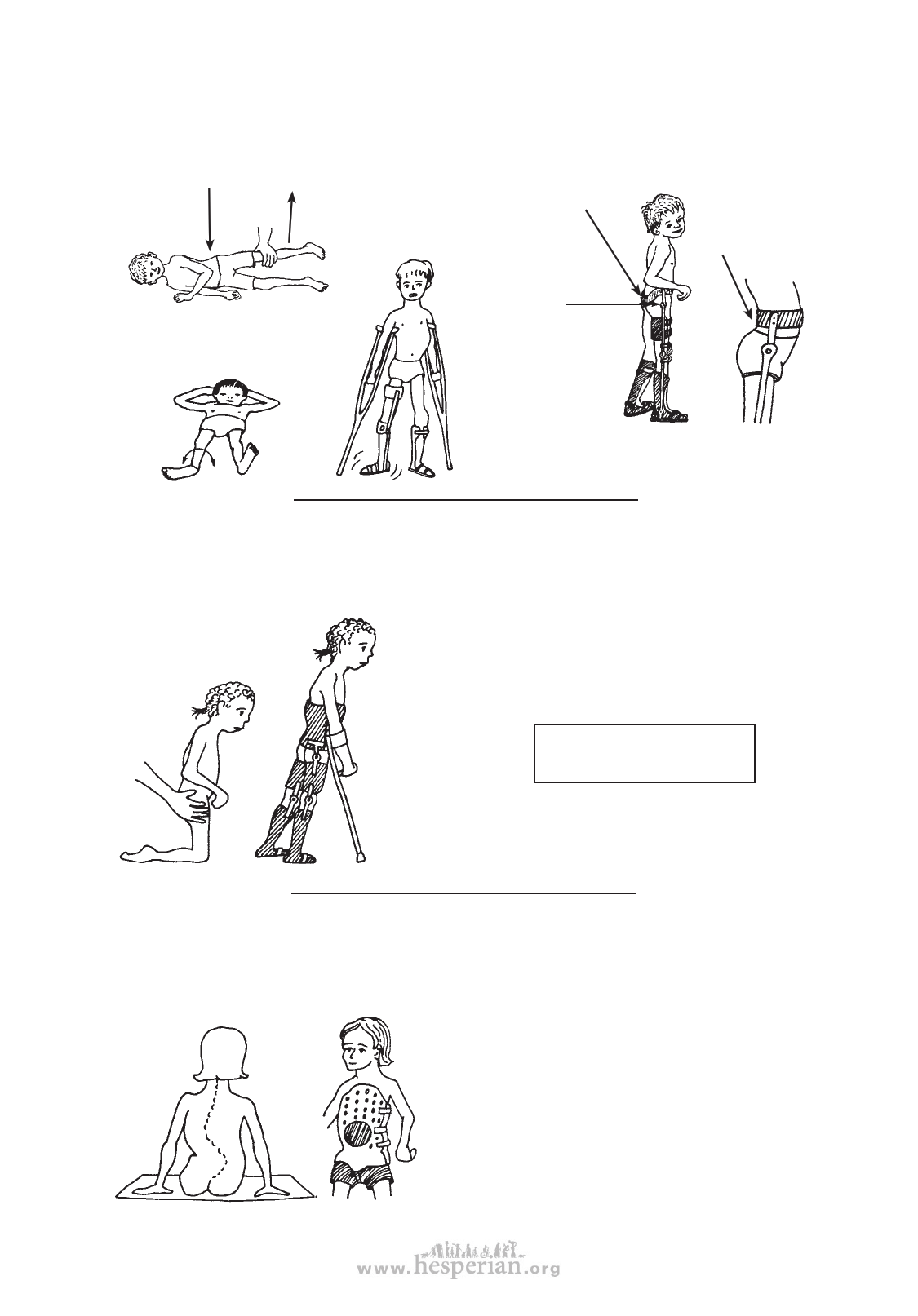
A child with very weak hip muscles
may find his leg flops or twists about too
much with a long-leg brace.
If muscles are
weak here,
the child cannot
lift like this,
or if he
cannot
turn his
leg in
and out
like this,
it may flop
and twist
with a brace
like this.
polio 73
He may need a brace with a hip band to
help stabilize the leg at the hip.
A hip band that
sits on the butt
often provides
better posture
than a higher
waistband.
joint for sitting
(with a lock if
necessary)
A plastic hip band
is less stable but
more flexible
and allows better
stepping in some
children.
A hip band that
passes above the
butt often lets the
butt stick way
out and causes
swayback.
BETTER
WORSE
A child with weak body and back
muscles, who cannot hold up her body
well, may need long-leg braces attached
to a body brace or body jacket.
If she has difficulty
holding her body up
like this,
she may
need a
brace
with
body
support.
Note: Often a child at first may need
a hip band or body jacket to help
stabilize her for walking. A few weeks or
months later she may no longer need it.
Removing it may help the child gain more
strength and control. It is important
to re-evaluate the child’s needs for
bracing periodically.
Take care to use no more
bracing than is needed.
A child whose backbone is becoming
seriously curved may benefit from a
body brace (or in severe cases, she may
need surgery).
If necessary, the body brace can be
attached to long-leg braces as shown
above.
More information on spinal curve can be
found in Chapter 20. For information on
how to make body braces and jackets, see
Chapter 58.
disabled village children